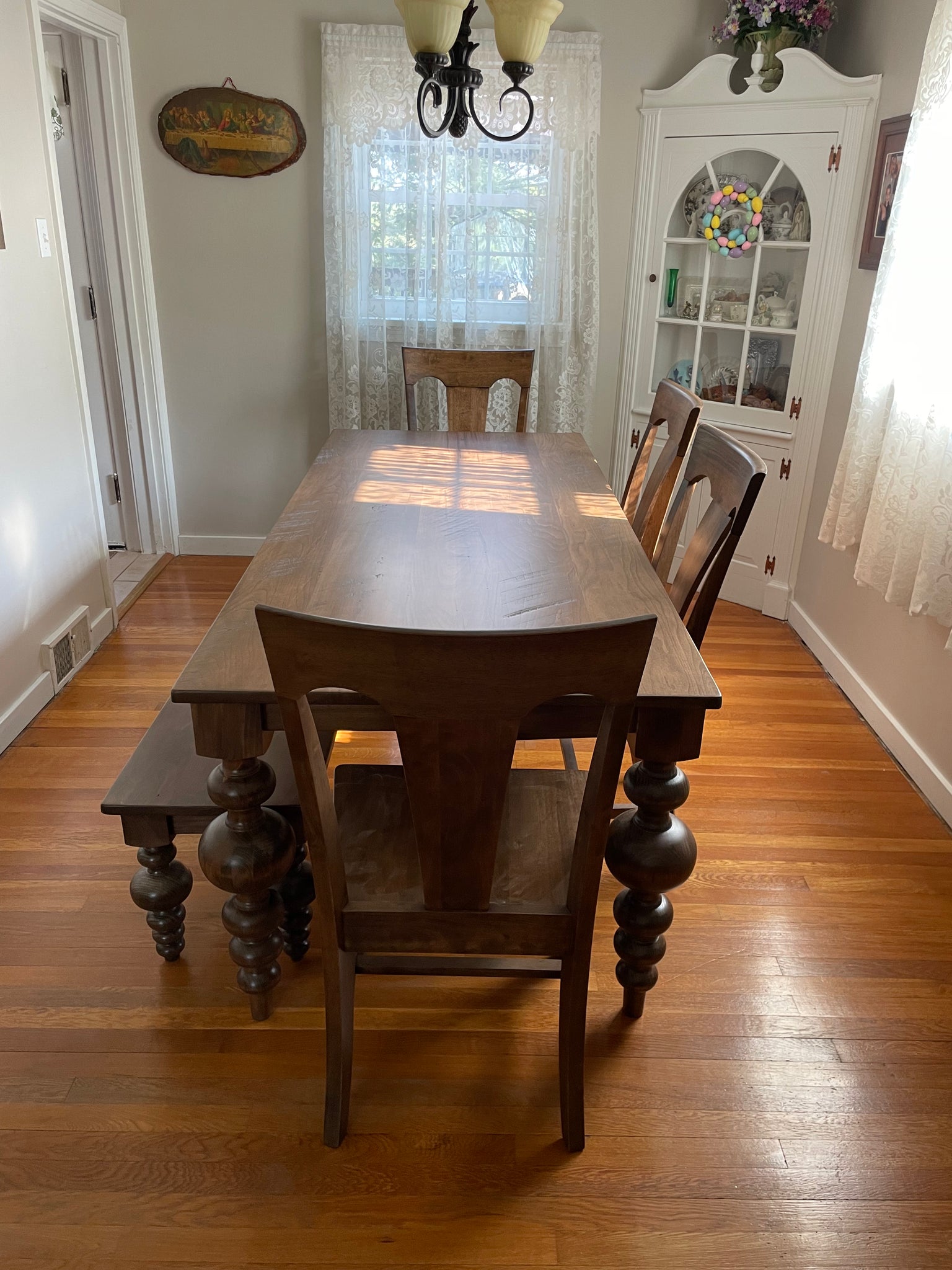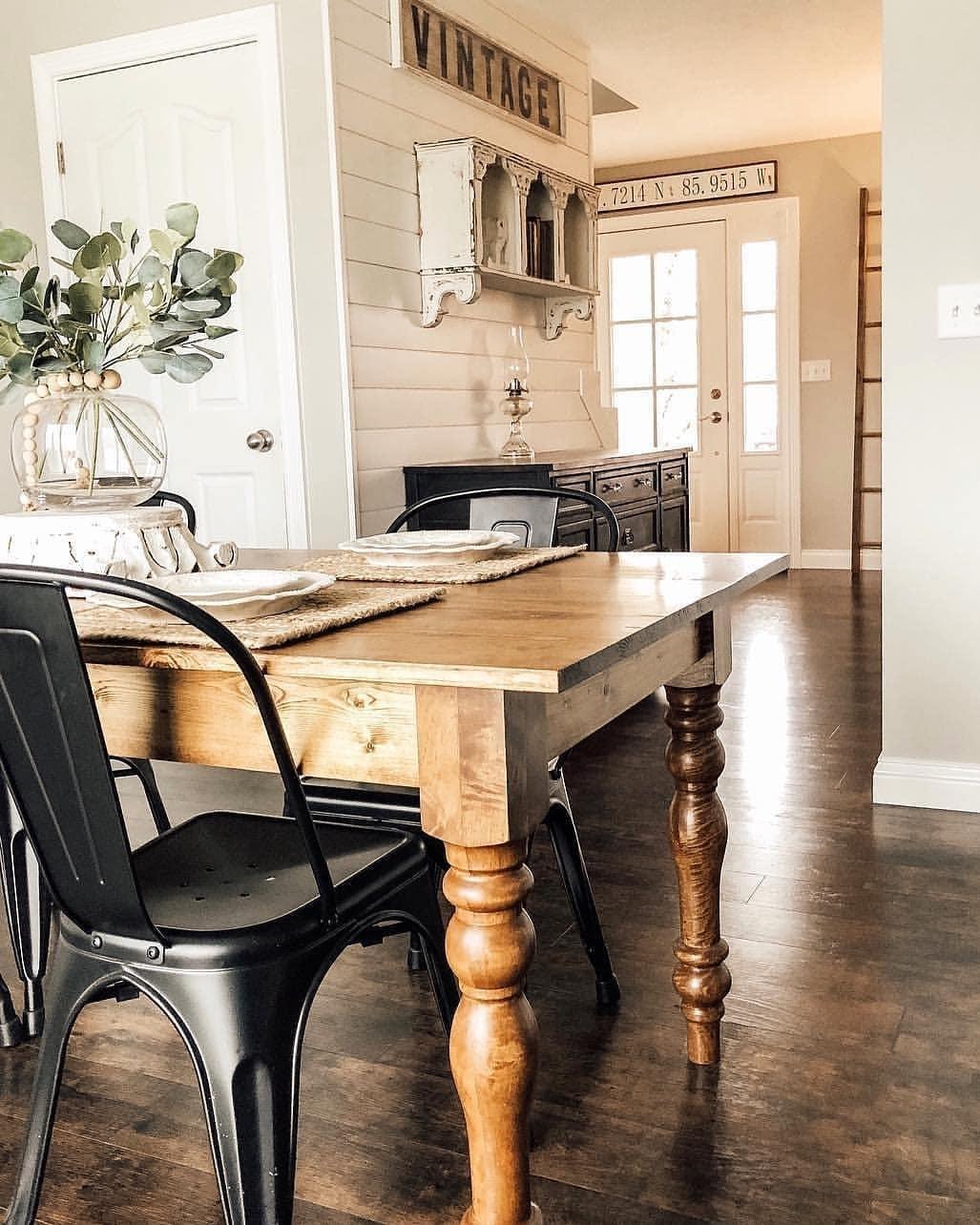Personalized Dining Room Table Legs: A Stylish Enhancement to Any Kind Of Home
Personalized Dining Room Table Legs: A Stylish Enhancement to Any Kind Of Home
Blog Article
Selecting the Perfect Dining Table: What Styles Job Best for Your Home?
Selecting the ideal table for your home can be a nuanced process that stabilizes aesthetic appeals and functionality. Whether your area leans towards standard beauty, modern-day minimalism, rustic charm, or commercial elegant, the selection of styles available can accommodate diverse tastes. Each layout provides one-of-a-kind benefits and obstacles that can either enhance or disrupt your eating area's consistency. Recognizing exactly how various products, forms, and dimensions communicate with your existing style is important. To browse these choices efficiently and locate a table that truly matches your home, take into consideration the following elements in information.
Analyzing Your Space
Evaluating the dimensions and design of your dining area is a crucial primary step in selecting the ideal eating table. Begin by determining the size and size of the space, making up entrances, home windows, and various other building attributes that can affect table positioning. This guarantees that your table not just fits yet additionally enables comfy activity around it.
Take into consideration the variety of individuals you commonly entertain. A table should suit your house's day-to-day demands while supplying enough adaptability for periodic visitors. As a policy of thumb, designate a minimum of 24 inches of table width each to ensure a comfy eating experience.
It's likewise necessary to maintain appropriate clearance around the table. Preferably, there must be at least 36 inches in between the table side and walls or other furnishings, allowing easy access and activity. For areas where chairs with arms or additional storage space systems like buffets are involved, increasing this clearance to 48 inches is suggested.
Illumination and atmosphere play substantial functions as well. Guarantee that your dining table straightens with existing lighting components or prepare for adequate illumination solutions. This thorough spatial evaluation warranties that your dining table not just fits physically yet likewise harmonizes with your space's overall performance and visual.
Popular Table Styles

Typical eating tables usually include elaborate details, curved legs, and rich timber surfaces, evoking a sense of classic sophistication. They are best for homes with traditional design or those looking to include a touch of refinement to their eating area.
Modern dining tables focus on simplicity and clean lines, usually including materials like glass and metal. These tables are ideal for modern areas, providing a streamlined and clean look that enhances minimal design ideologies.
Rustic table, on the other hand, stress natural products and a handmade appearance - dining room table legs. They commonly include recovered wood and a troubled surface, creating a cozy and inviting ambience. These tables work well in farmhouse-style homes or those looking for a comfortable, natural feel
Industrial eating tables integrate raw materials such as metal and timber, commonly showcasing an utilitarian visual. This style is appropriate for lofts or metropolitan spaces, adding a touch of sturdy appeal and durability to the eating experience.
Each design provides distinctive advantages, making it necessary to choose webpage one that straightens with your home's overall style and your individual preferences.
Product Selections
When selecting a table, the choice of material plays a critical role in establishing both the table's visual appeals and capability. Timber, metal, glass, and composite materials each deal unique benefits and difficulties, making it important to straighten the product with your home's design and way of life demands.
Wood is an ageless and flexible alternative, available in varieties such as oak, walnut, and mahogany. Understood for its longevity and warmth, wood complements both standard and modern insides. Nonetheless, it requires regular maintenance to avoid scrapes and bending.
Metal tables, frequently crafted from stainless steel, aluminum, or wrought iron, are applauded for their contemporary allure and robustness. They are particularly suited for industrial or minimal setups yet can be vulnerable to damages and might really feel cool to the touch.
Glass eating tables bring an air of sophistication i loved this and visibility, suitable for smaller areas as they create an illusion of more room. While very easy to tidy, glass can be prone to spots and needs cautious dealing with to avoid chips and cracks.
Composite products, such as MDF and plywood, deal economical and adjustable services, though they may do not have the long life of all-natural materials. Selecting the right product ensures your table is both a functional property and an aesthetic delight.
Sizes And Shape Considerations
After identifying the appropriate product for your table, the next factor to consider is choosing the best shape and dimension to suit your room. The form of the table significantly affects the space's aesthetic and functionality. Rectangle-shaped tables, one of the most common shape, are excellent for bigger spaces and can fit a higher variety of guests. They likewise allow for a more official dining experience. On the other hand, rounded tables foster a feeling of intimacy and are outstanding for smaller sized dining areas, urging conversation by removing corners and making every person feel just as included.
As a regulation of thumb, allot at the very least 24 inches of table size per individual to make sure comfy eating. Furthermore, think about the table's clearance area: there ought to be at least 36 inches between the table edge and the wall surfaces or various other furnishings. Prolonging tables provide versatility if you frequently hold bigger events, supplying added seating when needed without occupying extra room daily.
Matching Your Style
Selecting an eating table that balances with your existing design is pivotal in developing a cohesive and welcoming area. Begin by assessing your existing interior layout style, whether it be modern, traditional, rustic, or diverse. The dining table need to match the overall visual, not take on it. A streamlined, minimalist table with tidy lines is ideal for a contemporary home, while a vintage, ornate table fits a more standard setup.
If your decoration includes cozy tones and natural materials, think about a wood table to improve the natural feeling. Alternatively, a glass or steel table might be extra appropriate in a space dominated by awesome colors and industrial aspects.
Appearance plays a critical duty. A rough-hewn, redeemed timber table can include personality why not look here to a rustic space, while a refined marble surface can raise a glamorous dining area. Consider the scale and percentage of the table in relationship to the space size and existing furniture. A well-matched table not just improves visual appeal yet additionally enhances the overall dining experience.

Conclusion
Choosing the suitable table necessitates careful consideration of area, design, products, shape, and size (dining room table legs). Conventional tables complement traditional insides with abundant timber coatings, while modern tables suit contemporary settings through glass and metal. Rustic styles introduce warmth by means of all-natural products, and commercial designs boost city settings with raw components. Integrating the table with existing decor ensures both functionality and visual appeal, contributing to a cohesive and aesthetically pleasing dining location.
Report this page